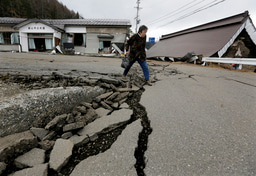Balancing Growth and Green: How Industrial Land Expansion Influences Economic and Environmental Outcomes
Published in Earth & Environment and Computational Sciences
Urban landscapes continuously evolve, with industrial land as a cornerstone for economic progress and industrial operations. As urbanization accelerates globally, the demand for industrial spaces—home to manufacturing facilities and warehouses—grows. However, this expansion comes with significant environmental costs, particularly in carbon dioxide emissions.
Our recent communications earth & environment article (Yoo et al., 2024) highlights how expanding industrial land disproportionately affects economic growth and carbon emissions in developing versus developed regions. In developing areas, industrial land expansion is a primary driver of economic advancement but also substantially increases carbon emissions. In contrast, developed regions are witnessing a shift in economic drivers towards sectors like education, diminishing the role of industrial expansion.
Unveiling Industrial Growth Through Satellite Images and AI Techniques
We developed a cutting-edge methodology to analyze these trends using high-resolution (30m) satellite imagery combined with machine learning techniques. This approach allowed us to map urban industrial areas across ten key countries, revealing detailed industrial land use patterns from 2000 to 2019. Notably, China's industrial regions have expanded significantly, surpassing those in the United States by 2019.
Diverse Economic Impacts
Our analysis shows that industrial land per capita in developing regions contributes significantly to economic growth—about 31% compared to 8% in developed countries. In these developing areas, the influence of industrial land on GDP surpasses even that of educational advancements. However, education plays a more critical role in developed regions, influencing around 35% of economic outcomes.
Varied Contributions to Carbon Emissions
The study also sheds light on carbon emissions, noting a stark contrast in their association with industrial land expansion between developed and developing regions. In the latter, the impact of industrial land on per capita carbon emissions is remarkably high, accounting for 55% of emissions compared to other factors.
Strategic Recommendations for Policymakers
Our findings underscore the need for nuanced industrial land management strategies tailored to different development stages. For developing regions, it is crucial to balance industrial expansion with environmental sustainability. This involves adopting cleaner energy sources and advancing low-carbon technologies to mitigate the adverse effects of increased carbon emissions.
Conversely, developed regions should optimize existing industrial land and foster technical innovation driven by human capital. This approach enhances economic output and helps decouple economic growth from carbon emissions.
As we move forward, policymakers must implement balanced strategies that foster economic growth while addressing the urgent challenges of climate change. Our study provides a foundation for understanding the complex dynamics and crafting policies that ensure sustainable development across different global regions.
Follow the Topic
-
Communications Earth & Environment

An open access journal from Nature Portfolio that publishes high-quality research, reviews and commentary in the Earth, environmental and planetary sciences.
Related Collections
With Collections, you can get published faster and increase your visibility.
Geology of the Moon
Publishing Model: Hybrid
Deadline: Jan 31, 2026
Drought
Publishing Model: Hybrid
Deadline: Dec 31, 2025




Please sign in or register for FREE
If you are a registered user on Research Communities by Springer Nature, please sign in